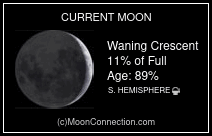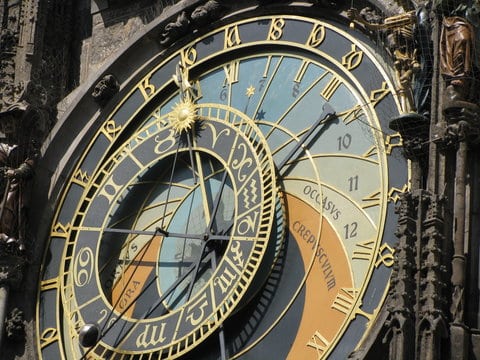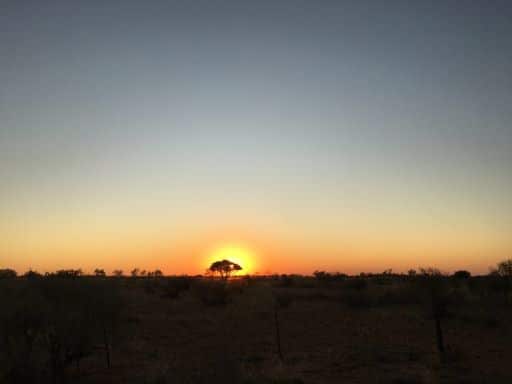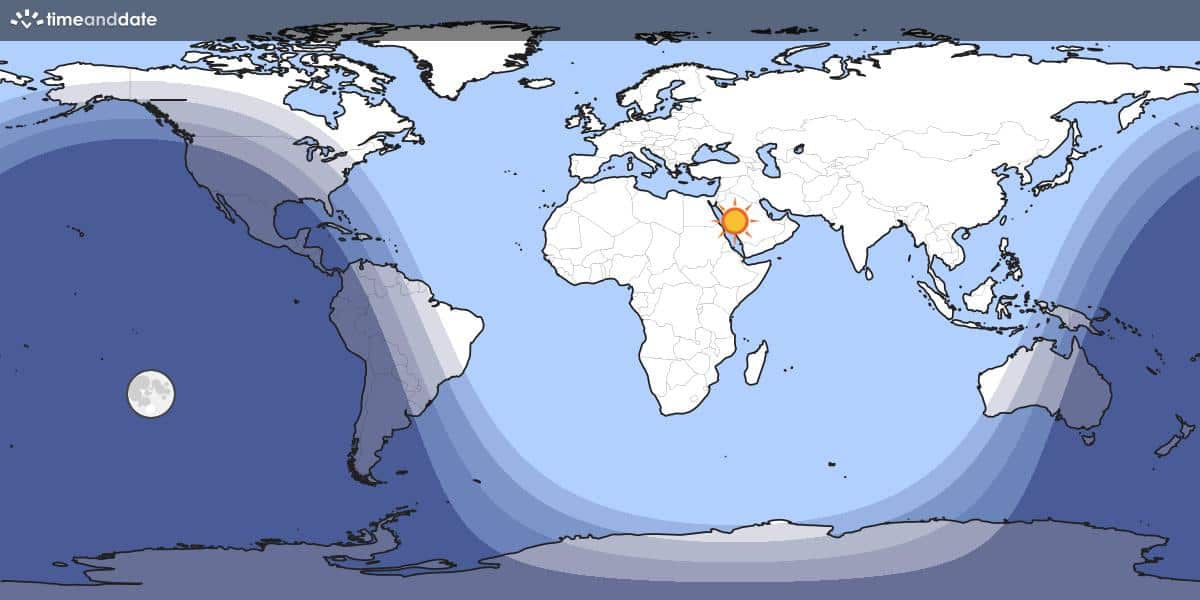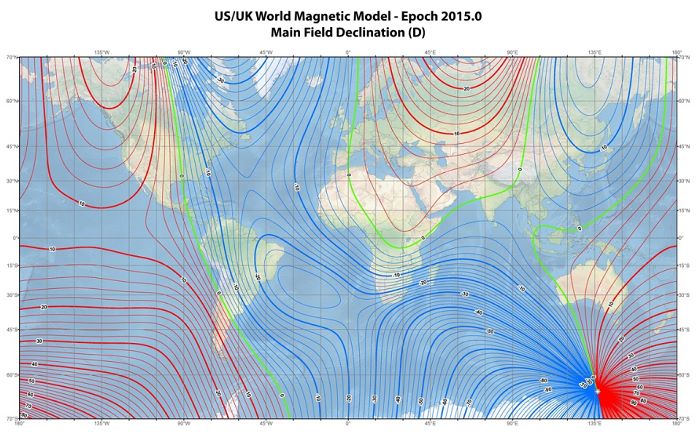3 Coeval Globular Clusters
A magnificent and unusual quartet of globular clusters, of which three are coeval
NGC 2156
RA 05 57 45.0 Dec -68 27 36 Mag 11.4 Size 1.1′ Age ~65 million years old
NGC 2159
RA 05 57 57.0 Dec -68 37 24 Mag 11.4 Size 0.9′ Age ~65 million years old
NGC 2164
RA 05 58 55.9 Dec -68 30 58 Mag 10.3 Size 2.5′ Age ~98 million years
NGC 2172
RA 06 00 06.1 Dec -68 38 11 Mag 11.8 Size 1.7′ Age ~65 million years
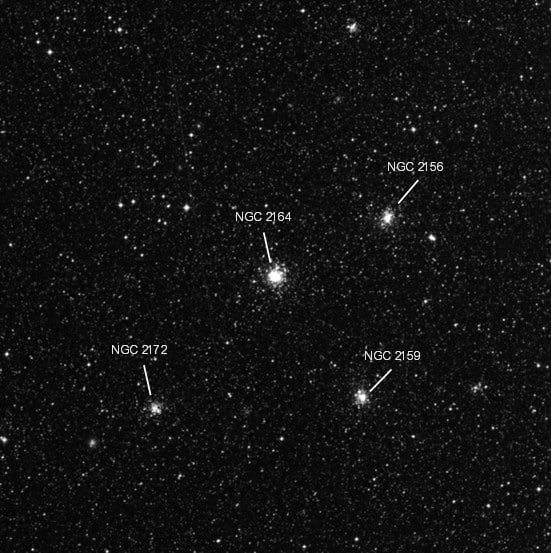
The unusual sight of four young blue globular clusters, three of which are coeval
This quartet of globular clusters in a rich 16′ starfield is a magnificent eye-catching arrangement of globular clusters! Not only are they visually stunning but three of them – NGC 2156, 2159 and 2172 – are also coeval. Their age (65 million years) is consistent with their star formation being triggered by the expulsion of residual gas from the quartet’s fourth member, NGC 2164 (98 million years old).
228x:
NGC 2156 is a gorgeous young globular, appearing as a bright oval, elongated N-S ~55″ x 30″. Its core is large, smooth and even; its halo has an enticing grittiness that hints of stars just beyond the reach of my telescope to resolve.
NGC 2159 is a somewhat unusual looking globular. It appears bright, round, ~40″ in diameter. It is smoothly bright, but brighter on the northern side, which gives it a slightly lop-sided appearance. A mag 13-13.5 star lies on its north side and a faint sparkler popped in and out of view, also on the north side.
NGC 2164 is the brightest (and most beautiful) of the four young globular clusters. It appears bright, round, ~1.5′ in diameter. It has a very bright core and a gritty halo in which a few mag 14 stars are resolved, as well as a mag 13.5 star in the north side of the halo.
NGC 2172 appears moderately bright, irregular, ~40″ in diameter. It is smoothly bright with a thin, faint halo. A mag 14 star lies on the southwest side, otherwise no resolution.



